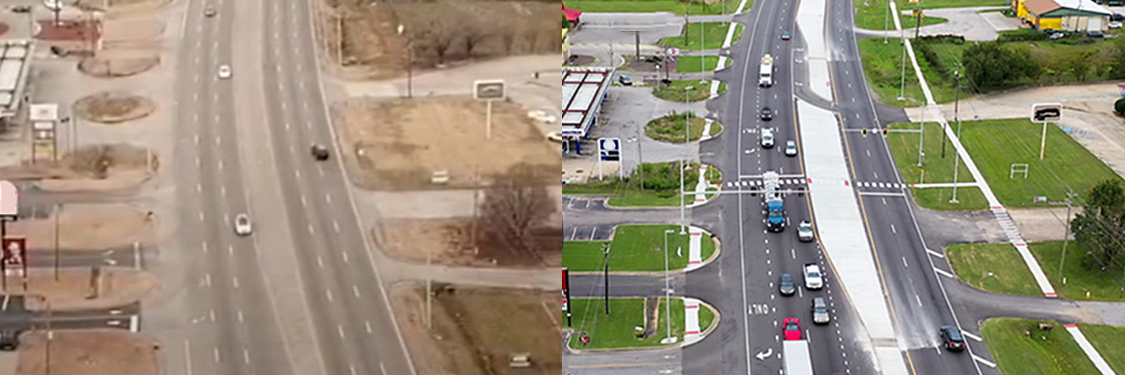
States Use Data to Drive Road Safety Improvements
We’ve all heard of big data. Big data in software, healthcare, economics, and many other parts of our lives. Did you know transportation practitioners are now using big data to save lives?
It’s called data-driven safety analysis (DDSA). DDSA is a suite of tools and approaches that harness the power of information to help agencies make more informed decisions, better target their investments, and reduce severe crashes nationwide.
The Federal Highway Administration (FHWA) recently developed 20 case studies that demonstrate the power behind DDSA.
“Gradually, State departments of transportation (DOTs) are taking on data as a tool to make safer road systems,” said Jerry Roche, the Safety Integration Team Lead for the FHWA Office of Safety. “DDSA gives DOTs the tools they need to understand the state of their road systems and the potential for safer systems. Not only does it support intelligent road design, but also prioritizes safety as a necessity in the design process, often in a proactive way.”
Following are peeks at four of the new case studies where States used DDSA to do just that.
For years, Alabama’s West South Boulevard between I-65 and Davenport Drive in Montgomery was the standard example of a high-speed, high-volume suburban arterial. It provided access to gas stations, hotels, fast food restaurants, and other businesses that kept the local economy going. Beside attracting lots of foot traffic, it also became a hotbed for crashes—particularly pedestrian crashes.

Aerial photos of Alabama’s West South Boulevard before (left) and after (right) pedestrian safety improvements such as reduced lanes, a raised median, and lighting installation were made. Watch a video about the project to learn more.
Credit: Alabama Transportation Assistance ProgramIn response, the Alabama DOT (ALDOT) redesigned the arterial using the Interactive Highway Safety Design Model (IHSDM), which assessed the predicted safety performance of both the existing condition and proposed redesign. Based on the data, ALDOT found it could improve safety for pedestrians without interfering with vehicular and pedestrian access to businesses.
ALDOT implemented several improvements: reducing West South Boulevard from six to five through lanes, adding raised divided medians and removing the two-way left turn lane, installing lighting, and closing driveways.
When the South Carolina DOT (SCDOT) learned that 5 percent of the worst-performing rural roads in the State accounted for 30 percent of all roadway fatalities and serious injuries, the agency knew something needed to change. After examining a 1.3-mile rural non-interstate corridor (SC 61 in Dorchester County), SCDOT used Highway Safety Manual (HSM) spreadsheets to assess the safety impact of various alternatives to the roadway’s current configuration.
The HSM analysis suggested 58 percent of traffic injuries could be reduced through a contextually sensitive design that preserves the historic and natural aesthetics of the corridor, which is a designated Scenic Byway. By expanding the lane width to 11 feet, shoulder width to 4 feet, and clear zone to 12 feet, SCDOT would be on its way to reducing traffic injuries by more than half, according to the predictive tool.
SCDOT found that DDSA tools allowed for sound engineering judgment and could prove to be very effective when special circumstances may not allow for standard design plans.
As part of a major mobility and operational redesign of State Road 37, the Indiana DOT (INDOT) identified five intersections for potential interchange alternatives. The agency used the IHSDM to assess the safety impacts of build and no-build alternatives over a 21-year analysis period from 2018 to 2038.
The data showed that total crashes over the period would be fewer, particularly fatal and injury crashes, using the build alternative. However, the analysis also showed that the interchange improvements would result in a slight uptick in intersection crashes.
The IHSDM allowed INDOT to tailor the analysis to reflect local conditions and project-specific challenges and to document the safety benefits under the build scenario.
The Arizona DOT (ADOT) determined that by focusing on improving the quality of its agencywide linear referencing system (LRS), it would also improve information sharing between data systems.
To do this, ADOT reviewed its major transportation-related data systems, including the Highway Performance Monitoring System (HPMS), bridges, pavement, assets, and safety. Noticing a pattern of siloed data, ADOT then developed a framework to identify critical issues such as gaps and overlapping data so the agency could trace systemic issues and correct them programmatically.
In addition to streamlining data collection, ADOT’s approach is a prime example of being proactive with data management, which, in turn, informs better safety treatments.
Data in the Driver’s Seat
These case studies show that using available data can help agencies make more informed safety decisions. Roche emphasized the importance of working together to get the best data possible.
“The bottom line is that robust, repeatable safety analysis relies on robust safety data,” added Matthew Hinshaw, DDSA program manager for the FHWA Office of Safety. “Programs that actively engage stakeholders within an agency and meet user requirements tend to have stronger enterprise data systems, and as a result, tend to have expanded capabilities.”
—MORE INFORMATION
Visit FHWA’s Roadway Safety Data Program webpage for a look at these and additional safety data case studies.
Contact Matthew Hinshaw for information on data-driven safety analysis and technical assistance.
Notice: The U.S. Government does not endorse products or manufacturers. Trademarks or manufacturers’ names appear in this article only because they are considered essential to the objective of the document.
Recommended Citation: U.S. Department of Transportation, Federal Highway Administration - Washington, DC (2023) Innovator Newsletter, March/April 2023, Volume 16 (95). https://doi.org/10.21949/1521904
- Cover
- States Use Data to Drive Road Safety Improvements
- U.S. DOT Leadership in Innovation: The Digital Revolution in Project Development and Delivery
- The Fight to Reduce Rural Roadway Departures: FoRRRwD’s Legacy
- Building Relationships that Advance Innovation
- States Innovate
- Learn About EDC-7 Innovations
- About Innovator



